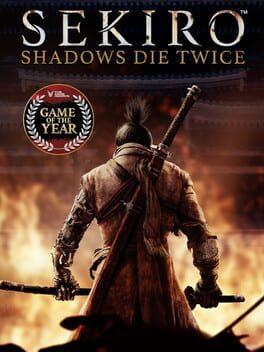"Sekiro: Shadows Die Twice" artfully merges its combat mechanics with its narrative, presenting an elegantly straightforward system. However, this simplicity, while narratively fitting, slightly misses the opportunity to delve into the complexities that could elevate the game into a realm of more strategic melee combat.
Parrying and Blocking Distinction: Currently, the game combines blocking and parrying into a somewhat undifferentiated defensive tactic, which may simplify engagements more than necessary. Introducing a more pronounced distinction—such as preventing parrying from a block stance and possibly requiring a directional input to parry—would compel less experienced players to adopt a more deliberate approach to defense.
The Role of Spacing in Combat: As it stands, the game's combat system underutilizes spacing, heavily favoring parrying over positional strategy. Making spacing a fundamental aspect of combat would introduce a significant tactical layer, requiring players to consider their positioning meticulously. Reworking enemies to punish predictability and prolonged close-quarters combat would force players to use the entire arena, making every step and swing into a calculated duel.
Utilizing the Environment in Boss Fights: The boss arenas in Sekiro offer scant chances for environmental interaction, a feature that, if expanded, could radically transform boss encounters. Envisioning arenas with embedded strategic elements and interactive hazards would not only make the surroundings a pivotal component in the strategy for victory but also add a layer of depth to each battle, making environmental awareness as crucial as swordsmanship.
Dodging Mechanics and Combat Philosophy: Despite Sekiro’s emphasis on aggressive forward motion and parrying precision, the ability to dodge without limit seems out of sync with the rest of the game’s mechanics. By limiting dodging, players would be nudged towards mastering timing and parrying, aligning more closely with the game’s philosophical underpinnings and heightening the combat challenge.
Visual Cues and the Art of Anticipation: Sekiro leans on visual cues to signal perilous attacks, a choice that simplifies the anticipatory dance between player and enemy. Diminishing or even removing these cues could elevate the combat experience, pushing players to become finely attuned to enemy patterns and tells, thereby rewarding skill and keen observation over mere reaction.
Ranking System for Mastery Recognition: The introduction of a ranking system—evaluating players on damage avoidance, combat efficiency, and minimizing healing—would not only honor mastery but also motivate players to delve deeper into Sekiro’s combat. This system could serve as a benchmark for players, encouraging them to explore and master the game's combat.
